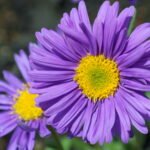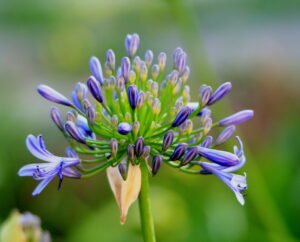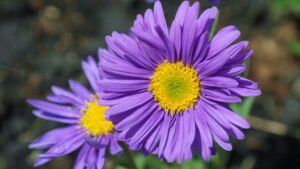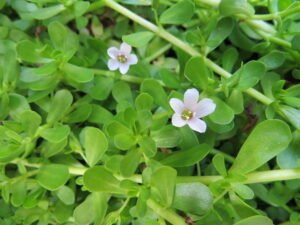Bromeliads: How To Care For Bromeliad Plants

Bromeliads
Bromeliads are popular houseplants known for it’s unique foliage and striking bloom. Ensuring proper care of Bromeliad plant is essential to keep the plant healthy and blooming.

What makes bromeliads special as house plants is it’s unique and colorful bloom and it’s overall appearance. Bromeliad plants care is easy and it involves basic plant care steps like watering, fertilizing and repotting etc.. If You are looking for how to care for Bromeliad plant then look no further; as in this article Bromeliad plant care is explained in detail.
Some Interesting Facts About Bromeliads
With over 80 genera and 3700 recognized species, the Bromeliaceae family—also known as the bromeliads—is a monocot flowering plant family. Bromeliad plant family is native to tropical North and South America.
The famous pineapple is a tropical plant in the family Bromeliaceae.
It might sound as a sad news that Bromeliad plant blooms only once in its lifetime but it is interesting to know that Bromeliad bloom lasts for more than five months. Overall life span of Bromeliad plant is two to five years and plant starts blooming once it hits maturity. Once the bloom on Bromeliad dies off it invests all its energy in producing new baby plants called pups. You can repot these pups and grow new Bromeliad plants.
Although it is not a parasitic plant in its native conditions Bromeliad is known to grow on other trees and even on rocks. Because Bromeliad uses its roots for support and balance only as nutrients intake is done through its leaves.
Bromeliad is known to have a water cup like formation in its leaves. It is interesting feature that plays major role in Bromeliad plant care as explained further in this article.
Some Commonly Asked Questions About Bromeliads
Is Bromeliad an Indoor or Outdoor Plant?
Bromeliad grows best in bright indirect sunlight, it means that Bromeliad prefers shade. Bromeliad leaves will burn in direct bright afternoon sunlight and at the same time it will not grow in dark as well. So Bromeliad makes perfect indoor plants if 6-8 hours of bright indirect sunlight is provided to the plant.
You can grow Bromeliad outdoor also given afternoon shade is provided and plant is safe from scorching heat and freezing cold.
Bromeliad grows best in temperature range between 65-80 Degree Fahrenheit (18-27 Degree Celsius) and temperature below 40 degree Fahrenheit (4 Degree Celsius) is harmful for plant. It is good idea to move the Bromeliad plant indoors if there is danger of frost.
How To Make Bromeliad Bloom?
Bromeliad plant reaches maturity in 2-3 years. Only a mature bromeliad plant can bloom, but there are chemical and natural process to force a bromeliad plant to bloom. Ethylene gas is known to stimulate the blooming in Bromeliad plant. This is explained in detail further in this article.
Is Bromeliad Plant Toxic?
No, bromeliad plant is not toxic to humans and pets. In fact some bromeliad varieties are known to produce edible fruits like famous pineapple. So bromeliad is a very safe indoor plant.
How To Care For Bromeliad Plant
Bromeliad Plant Types
Before we dive into plant care tips for Bromeliad Plants we need to understand that There are two type of Bromeliad Plants known as terrestrial and epiphytic.
Terrestrial Bromeliad plants need soil to grow while epiphytic type have roots only for support and balance and it can be grow even without soil as air plant.
Epiphytic bromeliad plant type have a cup like structure made up of leaves in center of the plant. This cup like formation in Bromeliad plant is also called and known as a “tank”. Understanding the function of this tank in Bromeliad is essential in it’s plant care.
Tank in bromeliad plant helps to intake all the necessary nutrients and water. This is explained further in this article.
Soil Mix For Bromeliad Plant
Both Epiphytic and terrestrial Bromeliad plant can be grown in soil. But for Epiphytic Bromeliad plant type soil mix’s nutrient quality is insignificant as it takes all its nutrients through its leaves.
Though it is important to provide potting soil mix with good drainage quality for both Bromeliad plant types and porous potting mix is recommended.
You can use commercial orchid potting mix blend for Bromeliad plants. Or you can prepare potting mix at home by adding 2 parts coconut husk, 1 Part pine wood bark, 1 Part sphagnum moss and 1 part sand. Potting soil mix should be porous enough to allow good drainage and air circulation around roots.
Watering In Bromeliad Plant
Watering plays major role in bromeliad plant’s care. Ensure to water deeply in pot until water flows freely out of drainage hole in the pot and then allow the the potting soil medium to dry before next watering. Overwatering can cause Bromeliad Plant’s roots to rot and underwatering will put plant in stress. Ensure that soil is never soggy or completely dry.
If your Bromeliad Plant have cup like structure in its leaves, ensure that this cup is always filled with water. You can change the water in “tank” periodically by inverting the plant and refilling with fresh water. This will ensure that there is no salt deposit inside the tank.
Misting In Bromeliad Plant
Bromeliads are tropical plants and they like humid environment around them. It is important to keep humidity at 50-75% around Bromeliad Plants. Ensure to mist Bromeliad Plants at least twice a week as it will ensure good plant health.
Fertilizing Bromeliad Plant
Because bromeliads grow slowly, they don’t need a lot of fertilizer. Apply slow released and balanced fertilizer once in growth season. Apply water soluble NPK 15-15-15 fertilizer directly on leaves by spray method. Or you can feed the plant through it’s “tank” by adding diluted compost tea or seaweed fertilizer in bromeliad plant’s “tank” water.
It is important to note that while flowering Bromeliad plants should not be fed any fertilizer. Also avoid fertilizing during winters when it is not the growth season for bromeliads.
Forcing Bromeliads To Bloom
As already explained blooming occurs in bromeliads naturally when the plant have reached maturity. But bromeliads are slow growing plants and plant may take up to 3 years to reach maturity. This can be a very long and frustrating wait period for some passionate gardeners.
But good is we can force bromeliads to bloom through chemicals and natural process. Ethylene gas is known to induce blooming in bromeliads. Apple, kiwi or banana like fruits are known to release Ethylene gas naturally during ripening.
Trick here is to cover bromeliad plant with air tight plastic bag with 1-2 ripening apple inside it along with bromeliad plant for 10 days. Ripening fruit will release ethylene and it will induce blooming in bromeliads in 6-10 weeks.
Bromeliads Pests And Diseases Care
Bromeliads are naturally resistant to most of the the pests and diseases. But there are some pest and disease problems in bromeliads that need to be taken care of.
Root rot and heart rot are fatal fungal diseases in bromeliads. Preventive care is to ensure that potting soil is never soggy. Though if plant is already affected then remove the affected parts and destroy them, also spray a fungicide of good quality.
Scale insect is the biggest insecticidal threat to bromeliads. Preventive care is to spray plants with neem oil mixture once in a month. Though if plant is already infested with scales it is advised to spray neem oil mixture on entire plant twice in a week until the problem is completely resolved.
Tags: #Bromeliads Plant Care, #How To Care For Bromeliads, #How to Plant Bromeliads, #Bromeliads care for beginners, #Bromeliads care tips, #AmazeGarden.Com, #Plants Care Tips, #Gardening, #Kitchen Gardening, #Terrace Gardening, #Backyard gardening, #Container Gardening, #Urban Gardening, #plants Care, #Bromeliads Care, #Bromeliads Care Tips,
To Get The Latest Gardening News, Tips And Tricks – Subscribe to our newsletter!









